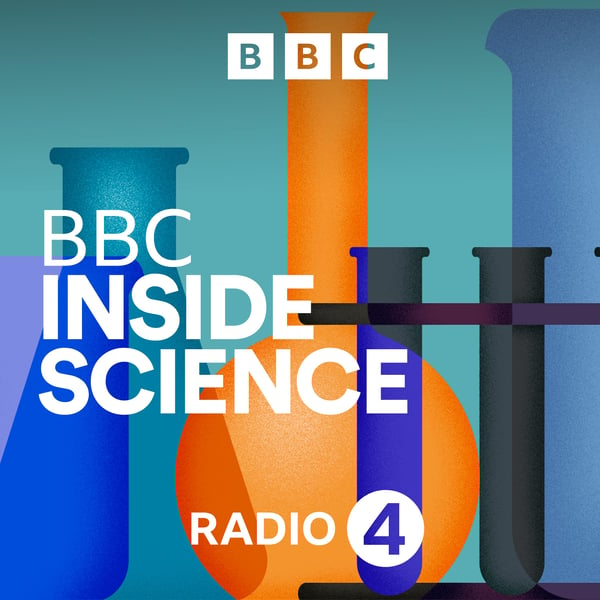Whales from space; Flood emails; SUYI JET Lasers; CERN's new tunnel; Discoveries exhibition
BBC Inside Science
BBC
4.5 • 1.3K Ratings
🗓️ 13 February 2014
⏱️ 29 minutes
🧾️ Download transcript
Summary
Whales from Space. Scientists have demonstrated how new satellite technology can be used to count whales, and ultimately estimate their population size. Using Very High Resolution (VHR) satellite imagery, alongside image processing software, they were able to automatically detect and count whales breeding in part of the Golfo Nuevo, Peninsula Valdes in Argentina.
The new method could revolutionise how whale population size is estimated. Marine mammals are extremely difficult to count on a large scale and traditional methods are costly, inaccurate and dangerous; several whales researchers have died in light aircraft accidents. How long will the floods last? Is this a trend caused by climate change? Should I turn on the kitchen taps so that house is at least flooded with clean water? We put listeners' flood questions to experts from the Centre of Ecology and Hydrology and the British Geological Survey.
The instrument we're shown this week is from JET (Joint European Torus) in Culham,. It's the world's largest 'tokamak' - a type of nuclear fusion reactor. The hope is that in a few decades it could be supplying much of the world's electricity. It works by fusing nuclei of hydrogen together to produce helium and a lot of excess energy. It's the power source of the Universe, as all stars run on fusion energy. But on Earth we have to go to much more extreme conditions to achieve it. Upwards of 100 million degrees Celsius, which is around ten times hotter than the Sun. Joanne Flannagan, shows us her lasers which measure the hot fusion plasma inside JET.
CERN wants a new tunnel. The 27km long, Large Hadron Collider in Geneva found evidence of the Higgs boson recently. But if we want to know more about this elusive particle and others that make up our universe, the physicists say they're going to have to go bigger. With a 100km long tunnel, in fact. Talks are afoot as to where and how they will build it. But Lucie asks reporter Roland Pease whether it'll be worth it?
The current Discoveries exhibition at Two Temple Place, on the banks of the Thames, brings together treasures from eight University of Cambridge museums, in a beautiful period building, built by Waldorf Astor. The show combines objects from science and arts collections to explore the theme of 'Discoveries'. Curator Professor Nick Thomas gives Lucie Green a tour.
Producer: Fiona Roberts.
Transcript
Click on a timestamp to play from that location
| 0:00.0 | Just before this BBC podcast gets underway, here's something you may not know. |
| 0:04.7 | My name's Linda Davies and I Commission Podcasts for BBC Sounds. |
| 0:08.5 | As you'd expect, at the BBC we make podcasts of the very highest quality featuring the most knowledgeable experts and genuinely engaging voices. |
| 0:18.0 | What you may not know is that the BBC makes podcasts about all kinds of things like pop stars, |
| 0:24.6 | poltergeist, cricket, and conspiracy theories and that's just a few examples. |
| 0:29.7 | If you'd like to discover something a little bit unexpected, find your next podcast over at BBC Sounds. |
| 0:36.0 | Hello, I'm Lucy Green and this is the BBC Inside Science Podcast for the programme first broadcast on the 13th of February, |
| 0:44.4 | where we rediscovered one of Darwin's discoveries and discovered why you might want to |
| 0:49.0 | flood your own home. Terms and conditions at BBC.co. UK slash Radio 4. |
| 0:56.4 | This week we're having a whale over time, spotting whales from space. That's coming up in |
| 1:01.6 | just a minute. Also, we'll shoot lasers at a donut. We'll find out |
| 1:06.0 | why Cern want to trade in their Hadron collider for an even larger one. And I got to rummage |
| 1:11.2 | through the drawers at a museum full of discoveries. |
| 1:14.4 | Okay, they didn't use the word rummage, I was allowed a careful look under watchful eyes. |
| 1:19.9 | But first, how a space age technology is helping us see animals that are too big to miss. |
| 1:26.0 | Given they're some of the largest animals on the planet, it often surprises me how little we know about whales. Their numbers, where they go, and what threats |
| 1:36.0 | they still face given hunting has reduced. Now scientists have come up with a method of seeing |
| 1:41.3 | whales from space by looking under the surface of the |
| 1:44.4 | sea. Before getting on to that I want to find out a bit more about the whales |
| 1:49.3 | they're spying on. One group that were almost hunted to extinction are the right whales. |
| 1:55.4 | There are three species of this whale, so called because they were the right whale to catch. |
| 2:00.6 | Professor Vicky Roundtree from the Ocean Alliance studies a large population of the southern right whale off the coast of Peninsula Valdez in Argentina. |
... |
Transcript will be available on the free plan in -4061 days. Upgrade to see the full transcript now.
Disclaimer: The podcast and artwork embedded on this page are from BBC, and are the property of its owner and not affiliated with or endorsed by Tapesearch.
Generated transcripts are the property of BBC and are distributed freely under the Fair Use doctrine. Transcripts generated by Tapesearch are not guaranteed to be accurate.
Copyright © Tapesearch 2025.

